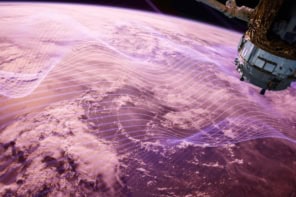Differences in the temperature of the earth's atmosphere as measured by satellites and ground-based instruments have puzzled scientists for years, and caused some politicians to doubt the reality of global warming. Now, however, calculations by Frank Wentz and Matthias Schabel of Remote Sensing Systems in California have shown that small decays in the orbit of satellites may have caused the discrepancy (Nature 394 661).
Previously satellite measurements have suggested that the atmosphere was cooling at 0.05 Kelvin per decade, while ground-based instruments showed an increase of 0.13 Kelvin per decade. However, as polar satellites orbit the Earth, they suffer atmospheric drag. The thickness and height of the Earth’s atmosphere is dependent on the sun’s solar activity. When solar activity is at a maximum, ultraviolet rays from the sun heat the upper atmosphere. This causes the atmosphere to expand outwards, which increases the drag experienced by satellites. Wentz and Schabel calculated that this caused the orbits of polar satellites operated by the National Oceanic and Atmospheric Administration (NOAA) in the US to decay by 1.2 km per year over a 17 year period. They also discovered that the Microwave Sounding Unit (MSU) used to measure the troposphere temperature profile is very sensitive to height fluctuations. By developing a correction factor for the instrument, they were able to re-evaluate the satellite data. They found that the instrument now measured a temperature rise of 0.07 Kelvin per decade instead of the previously reported fall. This new figure is similar to results predicted by computer climate models and explains why the satellites had seen increased cooling in the troposphere during periods of increased solar activity in 1979-83 and 1989-92.



